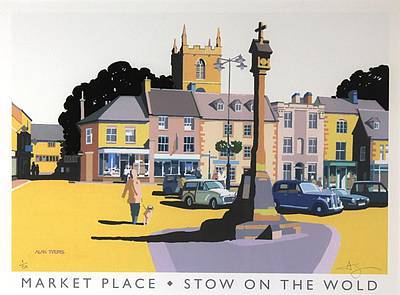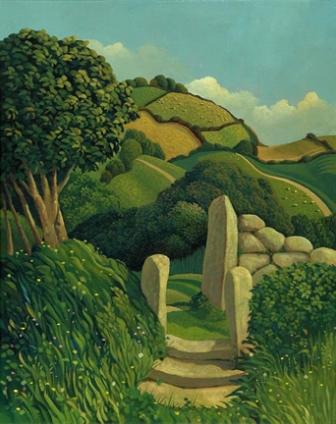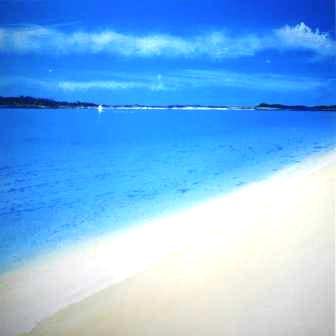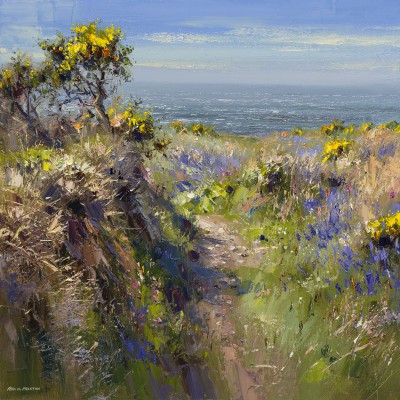Limited Edition Print Glossary

Art Print Glossary
Limited Edition Prints and Art Print collectors sometimes ask about the terms used by British art galleries. For art enthusiasts interested in the British art print market who would like to know more about the day to day terminology used by art gallery staff and dealers Red Rag has produced a list of definitions. We hope you find the list below helpful. If there are any art terms relating to limited edtion prints and art prints not listed which you would like featured please email Red Rag and we will try and help.
Archival properties
Archival properties is a term used to describe the potential longevity and susceptability that different types of print paper offer against fading over time. Deterioriating Limited Edition Print quality is primarlily caused by exposure to ultra violet light. To reduce the harmful effects of UV light on art prints exposure to direct sunlight should be avoided. Other factors which contribute to deteriorating quality of limited edition prints include pollution, acidity plus high humidity and temperature levels. With concientious care British limited edition prints from Red Rag should last well over 100 years.
Artist Proof or A/P
Generally it is accepted that in addition to a limited edition prints series then a further 10% of the edition size can be created as "artist proofs". Therefore a limited edition print series of 100 can have prints marked 1/100, 2/100 upto 100/100 plus an extra ten prints signed and/or marked A/P. The artist's proof is part of a limited edition run of prints. The A/P prints are produced before the limited edition print run as "test prints". The artist and publisher use A/P prints to ensure the final art print is of the quality required. because of this A/P's may vary slightly from the limited edition print series. Artist proofs are often seen as more valuable as they have a rarity value in number and may differ slightly to final limited edition series.
Edition Number and Numbering
Limited edition prints are usually signed and numbered with the edition number on the bottom left, the title in the middle and signature on the right of each art print. The print is either signed by the artist or the publisher. For a limited edition series of 100 the print numbering convention is usually shown as 1/100 for the first print; 2/100 for the second print and then sequentially until the final print 100/100. Additionally it is generally accepted that the artist or printmaker can mark also create up to ten per cent of the edition as an artist proof. Therefore an edition of 100 would have an extra ten prints signed and/or marked A/P. Historically "Artist Proofs" were often the highest quality images of the print series, however the introduction of Giclee technology has contributed to an overall improvement to all editions in a series.
Giclee Prints
The word Giclee originates from the French "to spray". A Giclee print is produced by a computer controlled, fine art print making process. It uses millions of ink particles in a very fine spray, about 15 microns in size which is four times smaller than a human hair. The microscopic jet-stream spray is applied simultaneously to the paper and is controlled by a crystal frequency. The result is a fine art print with flawless colour reproduction and extraordinary consistency. Giclee art prints can be produced very cost effectively in large limited edition series. Most of the Limited Edition Prints featured by Red Rag Gallery have been created using Giclee technology.
Hand-embellished Prints
Hand-embellished prints are art prints and limited edition prints which have been over painted, by the artist or often by a third party, to highlight parts of the print. Some British art galleries and dealers claim the process creates a greater valuable print because of the print "originality". Prices for hand-embellished prints are greater than the basic print. Potential buyers of hand-embellished prints are advised to establish documented proof of who completed the over painting. Red Rag Gallery do not sell such prints.
Limited Edition Prints
Limited edition prints are identical prints which are produced in strictly limited and specified numbers. Limited Edition Prints are typically either numbered or signed and numbered by the artist or publisher. For a limited edition series of 100 the print numbering convention is usually shown as 1/100 for the first print; 2/100 for the second print and then sequentially until the final print 100/100. Most British artist prints sold by Red Rag Gallery are limited edition prints and are signed and numbered by the artist in pencil. A series of Limited Edition Prints can be created from an artist's original painting which is then photographed and transferred on to paper or canvas to make a print. Alternatively prints can be conceived and created by an artist on to a printing plate which is then used to produce limited edition prints.
Open Edition Prints
Unlike Limited Edition Prints where the number of prints are constrained by the size of the edition series Open Edition Prints can be produced in any quantity. Open Edition Prints are not numbered and it is unusual for them to be signed by the artist.
Original Prints
The term original print relates to prints where the image is created by the artist directly on to a plate, stone, block, or screen from which a print is produced. The limited edition print or art print has therefore not been reproduced from a previous painting but has been conceived and created solely as a print. Original Prints created by British artists today are seen by the art world as a more likely appreciating investment than prints produced digital technology. The edition size for Original Prints tends to be much smaller because the artist plate degrades through use and therefore limits the number of high quality prints that can be produced.
Provenance
Provenance is the recording of the history and ownership of a limited edition print or art print. Having well a well proven historic record which can be authenticated can significantly increase the value of limited edition prints. Provenance is a word which comes from the French verb provenir, meaning 'to come from'. A number of British artists and publishers supply certificates of authenticity with limited edition prints which can be helpful with resales of art prints. Another form of usual provenance are invoices, receipts and any other proof of purchase and ownership.
Silk Screen Prints
Silk Screen Prints are produced using a stencil process where an image is transferred onto a very fine mesh screen. The screen material is stretched across a frame and the printing ink is pressed onto the surface through the area of the screen that is not covered by the stencil. The most renown artist known for using the technique is Andy Warhol who created the iconic "Marilyn Diptych," featuring actress Marilyn Monroe.


